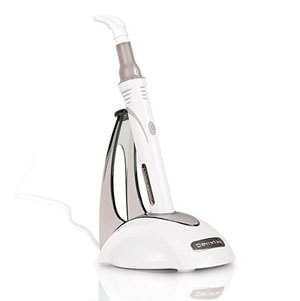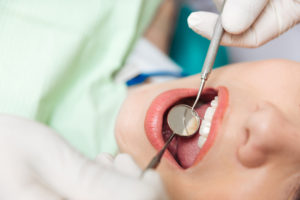General dentistry involves the evaluation, diagnosis, prevention, management, and treatment of various conditions and diseases that affect the maxillofacial and oral cavities of the body. General dentists account for more than 80 percent of all dentists in the field. The remaining percentage is made up of dental specialists who work on specific areas or conditions, such as endodontists and oral surgeons. Typically, before a patient sees a specialist, a general dentist will examine them and advise that they see a specialist for their specific dental needs.
A general dentist works as the primary dental care provider. Practicing dentists have either earned a DDS (Doctor of Dental Surgery) or DMD (Doctor of Dental Medicine) degree. These degrees have the same curriculum requirements; the difference is usually the names given to the courses.
General dentistry is a hands-on practice. After earning their degrees, general dentists must undergo four years of hands-on training at the dental school to gain a deeper understanding of their field and work on various conditions. Some general dentists also specialize in particular fields such as pediatric dentistry, orthodontics, or endodontics in addition to their general practice.
You should see a dentist at least twice a year, even if you have no visible oral problems. Dentists are able to detect problems that might affect your teeth in the future, which is part of preventive dentistry. Dentists are also able to restore damaged, broken, and decayed teeth and treat gum diseases. Some general dentists may also offer cosmetic treatments to improve the appearance of teeth, such as teeth whitening and veneers.
What are the most common dentistry treatments?
Most general dentists offer the common dentistry treatments indicated below. Some may also offer additional services according to additional areas of speciality.
- Cavity fillings
- X-rays
- Dental exams
- Deep dental cleanings
- Oral cancer screenings
- Treatment of gingivitis and periodontal disease
- Treatment of Temporomandibular Joint Disorder (TMD)
- Fluoride treatment
- Root canal treatment
- Tooth sealants
- Cosmetic dentistry
- Minor surgeries such as removal of decayed teeth and wisdom tooth
Types of General Dentistry Procedures
Preventive dentistry procedures
Preventive dentistry includes procedures to help strengthen teeth and prevent the onset of dental problems. Preventive procedures include dental cleanings and services such as the manufacturing and installation of mouth guards and dental sealants. Patients participate in their own preventive dentistry, through regular brushing and flossing. In addition, dentists can perform deep cleaning and regular dental exams to check for symptoms before they evolve into bigger problems.
Restorative dentistry
Restorative dentistry includes procedures to restore tooth health after infection or damage. Restorative procedures may include surgeries, fillings, bridges, dentures, crowns, and implants. Restorative dentistry may also include treatment of various conditions that can affect the teeth, jawbones, sinuses, and surrounding maxillofacial muscles. The extent of restoration primarily depends on the cause and extent of the damage.
Cosmetic dentistry
Cosmetic dentistry involves procedures to improve the aesthetics or the look of the teeth. These include procedures such as tooth whitening, veneers, gum contouring, and dental bonding. Other cosmetic procedures may include orthodontic treatments to correct overcrowded, twisted, or gapped teeth.
Amalgam Filling Removal
Dental amalgam fillings are made of various metals, including mercury, copper, silver and tin. Typically, mercury makes up 50 percent of the material by weight. These dental fillings have been used for over a century; however, there are some concerns over the health risks posed by mercury. New technologies provide safer materials that can be used in dental fillings. Patients can choose to have their amalgam fillings removed by a qualified dentist and replaced with a safer option.
Why mercury?
Mercury is the only metal that remains liquid at room temperature. It is able to bind other metals that are used for the filling. In the past, mercury was considered to be safe before it was discovered that it could wreak havoc on the body without any visible symptoms. According to WHO, mercury can have severe health effects on the body, including the immune system, eyes, kidneys, lungs, and skin.
Surprisingly, amalgam dental fillings are safe. However, they have an average lifespan of 10-15 years before they can start leaking. At this point, you may need to have the filling removed or replaced. An accredited dentist can safely remove the dental filling and place an alternative. Most patients experience some sensitivity for about two weeks after the removal of an amalgam filling. In rarer cases, there may be pain. Cases of pain are usually caused by problems with the root of the tooth, which may require treatment.
Patients with amalgam fillings should see a dentist at least twice a year for a check-up and advice. If the dentist notices some areas of weakness such as broken edges or cracks in the fillings, they can handle the problem in good time before it becomes a real health risk.
Breath Treatment
Bad breath, also called halitosis, affects 25 percent of the population. It can be caused by various factors, most of which are the result of bad oral hygiene. Halitosis can cause anxiety and embarrassment for patients, leading them to stock up on gum, mouthwash, and mints. Unfortunately, most of these products only provide limited and temporary relief. If you suffer from chronic bad breath, it’s best to seek treatment from your dentist.
Diagnosis
In diagnosing halitosis, a dentist smells the breath from the mouth and nose, and rates the odor at a scale. If the smell needs attention, they will scrape the back of the tongue to identify the cause of the bad breath. Medical devices can identify certain chemicals that cause bad breath, although they might not be available in every dental clinic.
Treatment
After ascertaining the cause, the dentist may apply various techniques to remedy the problem. In case of poor dental hygiene, they may recommend professional cleaning and advice on how to maintain good oral health. Second, they will check the mouth for any oral problems such as tooth decay and gum problems such as periodontitis, which are the leading causes of bad breath. If these interventions do not alleviate the problem, the dentist may recommend a medical checkup to identify other underlying conditions.
Some of the underlying causes of bad breath include the following:
- Bowel obstruction: People who are unable to have regular bowel movements may have breath that smells like feces. Bad breath is also present in people who have had prolonged vomiting.
- Bronchiectasis: This is a condition where airways become larger than normal, causing a buildup of mucus. The mucus leads to bad breath.
- Aspiration pneumonia: Caused by an infection of the lungs when one inhales liquids, foods, or vomit
- Ketoacidosis: Insulin levels in people with diabetes may get too low, causing the body to produce high levels of blood acids called ketones. This life-threatening condition causes a distinctive and unpleasant breath odor.
These underlying conditions require the intervention of a primary healthcare provider to resolve the bad breath problem.
Bridge
People can lose teeth for a number of reasons. Tooth loss may bring about various complications, including the inability to chew food, loss of the jawbone, and gum problems. Your dentist may use one of many methods available to close the space left by the lost tooth. A dental bridge is one method, which uses a false tooth, referred to as pontic. The tooth is held in place using an abutment on either side of the gap. Pontics can be made with various materials, including gold, porcelain, and composite materials that are designed to look like the rest of the patient’s teeth.
Dental bridges can improve how you chew and eat your food; however, you may have to cut soft foods into small pieces until you get accustomed to them. Bridges can also help you speak clearly and properly.
Types of dental bridges
There are four types of dental bridges commonly used:
Cantilever dental bridge
A cantilever is a dental bridge that is held in its right place using a single abutment tooth. This type of bridge is ideal for patients with a single natural tooth next to the gap.
Traditional bridge
This bridge consists of a false tooth (or several teeth) held in place by crowns that are affixed to both sides of the false tooth. This bridge is the most popular type, and is normally used by patients who have lost a single tooth between two natural teeth.
Maryland dental bridge
A Maryland bridge is similar to a traditional bridge, in that it employs two abutment teeth to hold the false teeth in place. However, unlike false teeth that use crowns, a Maryland bridge uses porcelain or metal framework, bonded at the back of the abutment teeth. Patients can use this bridge only if they have a natural tooth on either side of the bridge.
Dental bridge supported by an implant
Another option is to have a dental implant surgically placed in the space left by the missing tooth. The implant, made of metal, then holds the bridge in place. If you have several missing teeth, your dentist may use a traditional bridge between two implant-supported crowns to reduce the number of implants placed. This is the most stable bridge system, but takes longer to complete due to the healing time required for the implants.
How long does a bridge last?
You may have to replace a dental bridge every five to 15 years, depending on how well you take care of it. If you have an implant-supported bridge, the implants are permanent. However, it’s still important to practice proper oral hygiene to keep the implants and surrounding gums in good shape.
Broken Tooth
Teeth can be chipped or broken in a number of ways. The most common causes of broken teeth include sports injuries, car accidents, biting hard items, and getting hit in the face. No matter the size of the chipped tooth, it is important to seek the help of a dentist right away.
What to do if you chip your tooth
When you break your tooth, clean your mouth by gargling some water right away. If your mouth is bleeding, use cotton to apply pressure to the wound. However, if the tooth is loose, do not apply too much pressure to avoid dislodging the tooth from the gum. You may also use a cold compress on the area to reduce gum swelling. If you can locate the broken part of the tooth, wrap it in a wet cotton gauze and take it with you to the dentist.
What do you do if you lose a tooth?
If the entire tooth has come out of your mouth, wrap it in gauze. If the tooth is dirty, you can rinse it off with water. However, do not scrub it or place it in a cleaning solution. Do not use a tissue to clean the tooth. If you cannot get to the dentist immediately, place the tooth in a glass of milk or a saline solution. You’ll have the best chance of having your tooth replaced if you can arrive at the dental office within a half an hour.
Broken teeth often have jagged edges that can injure your tongue and the rest of the mouth. It is important that you avoid moving your tongue around in your mouth. You can also buy some dental wax and apply it on the sharp part of the tooth before you reach the dentist. Avoid eating or flossing your teeth before the dentist looks at your teeth. You may also apply a few drops of clove oil on the injured area. Clove oil contains an ingredient called eugenol, an agent that has both anti-inflammatory and numbing properties.
How does the dentist repair broken teeth?
The treatment method that the dentist uses depends on the location and size of the crack. Some of the possible treatments for a broken tooth include bonding, polishing, crown placement, and root canal procedures. The dentist may not treat very tiny cracks and surface lines. However, if there is some trauma, sensitivity and lots of pain, the dentist may check if there is internal damage and problems underneath the gums.
If the dentist determines that the tooth cannot be saved, they may recommend extraction of the tooth followed by placement of a dental implant.
Cavity
A cavity, also known as tooth decay, is a hole that forms on the surface of the tooth and exposes the tooth’s internal layers. Cavities usually start small, mostly with discoloration of the enamel. Cavities gradually get bigger with time and can lead to disintegration of the affected tooth. Since cavities typically do not cause any pain in the early stages, most people do not know they have a problem until it is very late.
Tooth decay is the leading cause of oral health problems around the world. Tooth decay affects people of all ages, including children and the elderly. It’s important to see a dentist regularly so that they detect cavities at the formative stage, before severe tooth decay occurs.
Symptoms of tooth decay/cavities
You may experience different symptoms depending on the severity of the tooth decay. Some common symptoms include:
- Tooth pain
- Tooth sensitivity
- Discoloration of the tooth
- A visible hole deep inside your tooth
What causes tooth decay?
Tooth decay is caused by plaque, a sticky substance that binds to teeth, usually just above the gum line. Plaque is formed by a combination of acid, bacteria, saliva, and food particles. Everyone has bacteria in their mouth. It combines with other particles when we eat sugary food. Then, the acid starts to eat away the enamel (the protective coating on your teeth). Decay sets in when the enamel coating weakens.
Treatment options for tooth decay
The option that a dentist uses to treat tooth decay is usually dependent on the extent of the decay. Treatment options include:
- Tooth fillings: The cavity may be filled with substances such as gold, silver, and composite materials
- Root canal treatment, in which blood vessels, nerve tissue, and decayed areas of the tooth are removed. The dentist then attaches a crown to the damaged tooth.
- Fluoride treatment: Early fluoride treatment may be enough to restore tooth enamel if the decay is not severe.
Cavity Prevention
Everyone is at a risk of developing cavities; however, you can prevent tooth decay by taking good care of your teeth. With good oral hygiene, it’s possible to never have a cavity. Follow these tips to prevent tooth decay:
- Brush your teeth at least twice a day using fluoride toothpaste
- Floss your teeth at least once a day
- Limit sugary drinks and snacks between meals
- Eat few acidic and sugary foods such as refined carbohydrates, sweets, juice, soda, and candy
You can also fight cavities using the following foods:
- Water with some fluoride
- Unsweetened green and black tea
- Calcium-rich foods
- Sugarless chewing gum with xylitol
- Fiber-rich vegetables and fruits
In addition to the above, be sure to visit a dentist at least twice a year for a dental exam and professional teeth cleaning. Your dentist can identify emerging problems before they cause severe dental complications. If you have pre-existing conditions that predispose you to tooth decay, such as diabetes or acid reflux, manage these conditions as well as possible. The earlier any tooth decay is detected and treated, the higher the chances that it can be treated effectively.
CEREC Same-Day Crowns
Conventional dental crowns require several visits to the dental clinic before they are completed and ready for use. If you have a busy schedule, this can be a huge inconvenience. And if you need crowns for aesthetic purposes for an event, you may not have the time for several visits. Fortunately, you can have crowns placed in one afternoon at a dental office thanks to CEREC technology. CEREC stands for Chairside Economical Restoration of Aesthetic Ceramics. This ceramic crown is strong, and is created and installed using computer-assisted technology.
What are the advantages of CEREC Crowns?
Restore your tooth function immediately
Missing teeth may affect your eating and speech. Having crowns placed quickly can help restore these capabilities as soon as possible. Unlike temporary crowns, there is no risk that your crowns may fall if you eat hard food such as carrots. CEREC crowns are reliable and can be used over a long period.
Safe and convenient placement
For traditional crowns, the dentist has to drill your teeth in order to fit the crown. This also increases the risk of injuring your teeth. Fortunately, CEREC crowns require far less drilling, as the crowns are attached to the teeth on either side of the gap. This saves more of your natural tooth, which helps keep the tooth strong.
Affordable
The cost of tooth replacement grows with every visit to the dentist. In addition, most traditional forms of tooth replacement require patients to purchase temporary crowns before the permanent crowns are prepared, which can add to the cost. With CEREC crowns, you have a brief visit to the dentist’s office and leave with crowns that will last a long time.
Improved appearance
CEREC crowns lack the metal core found in traditional crowns, making them look more like natural teeth. No one will realize that you have crowns unless you tell them. In addition, CEREC crowns are comfortable as they are made to fit your teeth perfectly.
Checkup & Cleaning
Regular visits to the dentist play an important role in preventing the loss of or damage to your teeth as well as other oral problems. Patients of all ages should visit the dentist at least twice a year to have a dental exam and professional cleaning.
What to expect at a dental checkup
Your dentist will do the following during a dental check-up:
- Take an X-ray of your mouth in order to check various issues in your mouth
- Check your gums for signs of gum recession
- Take note of any signs of cavities and tooth damage
- Check for signs of oral cancer
In most cases, the dentist starts with cleaning before the oral checkup. A professional dental cleaning will help manage issues such as plaque, teeth staining, and a buildup of calcium deposits on your teeth that may not be removed by regular cleaning and flossing.
Crowns
A crown is a cap placed on a damaged tooth. Crowns can be made from a variety of materials, including ceramic and metal. Crowns are specifically designed to match the shape and size of your missing teeth. This enables them to fit in the spaces in your mouth perfectly.
When choosing a crown, there are several factors to consider:
- Durability
- Strength
- Cost
- Appearance
Materials used for dental crowns
Some of the most popular materials used in making crowns include:
- Ceramic
- Porcelain
- Metal
- Zirconia
- Composite resin
- A combination of various materials for example, porcelain fused with metal
Things to keep in mind when selecting the material for the crown:
- The color of the surrounding teeth
- The number of natural teeth that remain
- The function of the tooth that needs the crown
- The location of your tooth
- Whether the tooth will show when you talk and smile
- The position of the gumline and surrounding tissue
Common types of crowns
Temporary crown
A temporary crown is placed in your mouth for a short period before a permanent crown or implant is prepared. This ensures that you can talk in confidence or eat while you await final treatment.
One-day crown
One-day crowns are placed in a single appointment. These crowns are made using computer-aided design and are milled and cut right in the dental clinic.
¾ or onlay crown
Sometimes you need a crown to cover only a part of your tooth. These crowns are called onlay or ¾ crowns.
When do you need a crown?
You may need a crown in any of the following situations:
- The cavity on your tooth is too large to be filled well
- The crown of your natural tooth is severely worn down
- Your tooth is cracked
- Your tooth has become weak from trauma or oral conditions
- You have had a root canal procedure
Dental Cleanings
Dental cleanings are recommended for most people twice a year, with or without any reported oral health problems. A dental cleaning typically includes the following:
- Removal of plaque and tartar from teeth
- Removal of any tough stains from teeth
- Polishing the teeth
- Comprehensive gum cleaning and checkup to check for any oral problems
How many cleanings should you have a year?
It is recommended that you have at least two professional cleanings a year. However, some people should have dental cleanings more often. This includes:
- People suffering from gum disease, to help stop the progression of the condition
- People with a family history of cavities and plaque build-up
- People with a weakened immunity (inability to fight off diseases and infections)
- People who have experienced traumatic events that could alter the chemistry in the mouth
When you complete your cleaning, your dentist’s office will schedule your next appointment, typically in six months. However, if you develop an infection, suffer a broken tooth, or are otherwise concerned about the health of your teeth, schedule an additional appointment between your regular cleanings.
What to expect during a dental cleaning
Dental cleanings are performed by a dentist or dental hygienist, and typically take between 30 minutes and an hour. Professional cleanings are important for keeping your teeth and gums clean. Many people are afraid of visiting the dentist due to anxieties and phobias; however, dental cleanings are not painful. You may feel a little discomfort, especially if your teeth or gums are sensitive. However, if you take good care of your teeth and have regular dental exams, dental cleanings are typically quick and painless.
What is the dental cleaning procedure?
1. A physical examination
The dental professional starts with a checkup of your mouth. They will use a concave mirror to check for any signs of inflamed gums or other issues.
2. Removal of plaque and tartar
With the use of the same mirror, the hygienist will use a scraper to remove tartar and plaque on your gum line and between the teeth.
3. Flossing and polishing
After scraping, the hygienist uses a handheld tool to polish your teeth with a gritty toothpaste. The paste helps in scraping off any stains. You may feel some grinding motion during the polishing. The hygienist finishes the process by flossing to remove any remaining plaque between the teeth.
4. Fluoride treatment
This is the last step in the cleaning process. A fluoride gel is applied to a mouthpiece that you wear for a minute to strengthen the dental enamel.
Dental Exams
A dental exam is part of preventive dental care. Dental exams allow your dentist to detect any oral issues and related conditions in the mouth or jaw area. Regular dental exams can help identify conditions that may develop without noticeable symptoms, such as cavities and oral cancer. They also help your dentist identify any abnormalities that may be worsening without you realizing it.
What can you expect from a routine dental examination?
During a dental examination, a dentist will:
- Evaluate your general oral hygiene
- Evaluate your risk of bone and gum diseases as well as tooth and root decay
- Check for teeth that require replacement or restoration
- Check for jaw and bite problems
- Demonstrate how to clean your teeth or care for dentures
- Assess your need for fluoride treatment
- Take a dental x-ray and perform any other diagnostic procedures
A dental exam also gives you an opportunity to talk to your dentist about other conditions in your body that might affect your oral health. This may include diabetes, arthritis, or any medications that may cause you to have a dry mouth. If you have bridges or dentures, your dentist will check their fit and advise accordingly. Your dentist may also give you advice on ways to improve your diet and enhance your oral hygiene.
Your dentist may also make a dental impression of your teeth in order to make mouth guards or create bleaching trays. They may feel the sides of your jaws and the inside of your cheeks and lips, as well as examine your tongue for signs of oral cancer.
A regular dental examination is your best bet for identifying oral issues before they become a serious problem. It is recommended that you have at least two dental exams each year, and more if you have an increased risk of contracting any dental condition.
Extractions
Permanent teeth are meant to last a lifetime. However, teeth sometimes need to be removed. Your dentist may recommend extracting a tooth if it is so badly damaged from decay or trauma that it cannot be repaired. Other reasons for tooth extraction include:
- Your mouth is crowded: You may have a few teeth pulled if there is no room for all of your teeth to align properly
- There is no room for an erupting tooth to grow
- You have a severe dental infection. When the pulp and the center of the tooth is infected, the dentist may pull the tooth to avoid spreading the infection to other teeth.
The extraction process involves the removal of teeth from their socket (dental alveolus).
What to expect from a tooth extraction
Before the extraction, the dentist may perform an exam of your tooth to check for potential issues. They may ask you if you are taking any drugs, vitamins, or supplements to determine if you are at risk of any potential complications. For example, any prescription blood thinners may need to be discontinued for several days prior to your procedure. Your dentist may send you to a doctor to have certain health conditions, such as high blood pressure, treated or stabilized before your tooth can be extracted.
Types of tooth extraction procedures
1. Simple extraction
A simple extraction is performed using a local anesthetic to numb the area around your tooth. You will feel some pressure but should not feel any pain. This type of extraction is often performed on teeth that are clearly visible and easy for the dentist to access. Simple extraction is usually a quick procedure.
2. Surgical extraction
Surgical extraction may be required for teeth that are hard to see, broken, or otherwise difficult to access. Surgical extractions involve the use of general anesthesia so that the patient is asleep during the procedure. During a surgical extraction, the dentist will make an incision in the gums to access the tooth, and may need to break the tooth into smaller pieces in order to remove it.
How long does it take to heal from an extraction?
area, sealing the wound. It’s important to rest for at least 24 hours following extraction. In addition, do not drink from a straw or floss the area for at least two days. Doing so could disrupt the blood clot and interfere with the healing process. Eat only soft foods for 24-48 hours and otherwise follow your dentist’s aftercare advice. If you experience pain or fever days after the extraction, or there is drainage in the area, contact your dentist’s office.
Fillings
If you have a cavity, your dentist will recommend that you have it filled. To place a filling, your dentist removes the decayed part of your tooth and fills the area with a safe and durable material. Dentists may also use fillings to repair worn or cracked teeth.
What are different types of filling materials?
There are different materials that your dentist can use for fillings. These include cast gold, silver filling (amalgams), tooth-colored composites, ceramics, and glass ionomer. Talk to your dentist about the advantages and disadvantages of each material to determine the best choice for you.
What is involved in the tooth filling procedure?
During placement of a dental filling, the dentist uses a local anesthetic to numb the area around the infected tooth. Then, using an air abrasion instrument or laser, they will remove the decayed part of the tooth. The dentist will then test the area to make sure all of the decayed material has been removed.
The next step is to clean the area of any remaining debris and bacteria. The dentist may apply a glass ionomer to protect the nerve. Then they will apply the filling to the area. A special light is used to harden the filling material, and any excess material is removed.
Indirect fillings
Indirect fillings are similar to composite fillings but are made at the laboratory. Dentists use these fillings if the tooth structure is too damaged to support a regular filling, but the tooth is not damaged enough to require a crown.
Fluoride Treatments
Fluoride is a naturally occurring mineral that helps prevent cavities and build strong teeth. It has been used over the years in oral treatments, as it is one of the best ways to strengthen the tooth enamel. In small children, fluoride may help reverse early signs of tooth decay. In children below six years of age, fluoride is incorporated into the development of permanent teeth.
Who needs fluoride treatments?
People with certain conditions may have an increased risk of tooth decay and may be able to improve their dental health with additional fluoride treatment. Such cases include:
- Dry mouth. If you have dry mouth conditions such as xerostomia, are taking medications such as antihistamines or blood pressure treatments, or are undergoing radiation treatment, you may benefit from fluoride treatment to prevent likely decay.
- Gum disease. People with gum diseases have a higher chance of tooth decay. Dentists will often recommend treatment once they notice signs of gingivitis.
- A history of cavities. If you have a history of cavities, your dentist may recommend fluoride treatment to prevent additional cavities.
- Presence of braces or crowns. These tools increase the risk of decay where they meet the natural tooth. A fluoride treatment can reduce this risk.
Most toothpaste includes fluoride, which offers enough minerals to keep the teeth strong. Tap water also typically contains fluoride to help strengthen teeth. Talk to your dentist if you think fluoride treatments would benefit you.
New or Unexplained Pain
Sudden discomfort or unexplained tooth pain can be caused by different factors. The following are some common causes of new or unexplained dental pain.
Gum recession
If your gum starts to recede, it leaves the roots of your teeth exposed. This may cause increased sensitivity and pain.
Erosion of enamel
The enamel is the protective cover on the tooth. Enamel may be eroded when you eat highly acidic food regularly or brush your teeth too hard. When enamel wears off, it exposes the dentin, which causes sensitivity and pain.
Cavities
Tooth decay is a condition where plaque eats the outer coating of the teeth. If the condition is not quickly treated, it can expose the nerve endings on your teeth and cause pain.
Tooth procedures
Tooth fillings and drilling may make the nerve endings of your tooth sensitive. This sensitivity can last for about two weeks.
Teeth bleaching
Bleaching gels, strips, and any other abrasive teeth whitening products may increase teeth sensitivity. This typically subdues when you stop using these products.
Cracked crown
If you have experienced trauma to your tooth, you may feel pain as nerve endings are disturbed.
For any sudden or unexplained dental pain, consider seeing a dentist as soon as possible. If the tooth pain is accompanied by migraine and fever, treat the condition as an emergency.
New Patient Exams
If you are going to a new dentist for the first time, you can expect to undergo a thorough new patient examination. While many people are fearful of going to the dentist, a dental exam is a pain-free experience that will allow you and your dentist to work together to determine the best course of treatment for your oral health.
What to expect from a new patient exam
Discussion with the dentist
Your dentist will likely ask you about your health history. This may include questions such as whether you suffer from any conditions such as diabetes, arthritis, or high blood pressure. If you have lost teeth in the past, let your dentist know what caused the loss, along with whether you experience any ongoing dental issues or have sought treatment in the past. This information will help your dentist determine which symptoms or issues to watch out for.
Professional teeth cleaning
A dental exam is often performed during the same appointment as a professional teeth cleaning, which is usually performed by a dental hygienist. A professional cleaning involves removal of plaque or tartar by scraping and polishing the teeth.
Dental examination
The dentist will conduct a physical examination of your mouth, tongue, neck, and maxillofacial muscles. They will check for gum problems, sores in the mouth, and any symptoms of oral cancer. The procedure also typically includes a physical check of any crowns or bridges.
X-rays
The dentist will likely take x-rays in order to fully evaluate the health and condition of your teeth. This will allow them to examine the condition of the tooth roots, sockets, and the jawbone.
Following your exam, the dentist will discuss the findings with you and provide recommendations for any issues or areas that need treatment.
Preventive Dentistry
Preventive dentistry is a combination of techniques and procedures meant to help your teeth remain healthy and strong. In essence, it prevents the onset of oral diseases and conditions such as tooth decay, gum disease, oral sores, and cancerous lesions. The following are some of the procedures included in preventive dentistry.
Professional cleaning
A professional dental cleaning aims to remove plaque that may lead to the erosion of tooth enamel and the onset of gum disease. You should have a professional dental cleaning at least two times a year.
X-rays
X-rays help the dentist examine your teeth, sockets, and jawbone for any signs of decay or infection. X-rays are usually part of a routine teeth examination and may be required to help the dentist diagnose some conditions.
Preventive dentistry at home
You can take several steps to prevent dental issues at home:
- Brush your teeth at least twice a day with a fluoride toothpaste
- Floss your teeth daily
- Eat a healthy diet
- Avoid sugary foods and drinks
- Visit your dentist at least twice a year
With good dental hygiene, you can substantially reduce the risk of getting serious dental problems such as tooth decay, gingivitis, and periodontitis. Taking good care of your oral health may also help reduce your risk of other conditions such as heart disease.
Scaling
Scaling, also referred to as deep cleaning, is a procedure used to remove hardened plaque and tartar from the teeth. Tartar cannot be removed by regular cleaning and flossing, and requires special dental tools to be completely eliminated from the teeth. If tartar is not removed regularly, it is likely to cause gum diseases and cavities.
What can you expect during scaling?
Scaling differs from your regular dental cleaning in several ways. First, regular dental cleanings involve the removal of tartar above the gum line. Scaling, however, involves removal of tartar below the gum line. Gum disease causes gaps between the teeth and gums where there is a buildup of tartar. This procedure removes the tartar buildup so that gums can re-adhere to the teeth.
It may take more than one visit to a dental office for gum scaling, with each visit lasting for up to two hours. Typically, one quadrant of the mouth is treated at a time. You will be given a local anesthetic to numb the gums and prevent any pain.
Following a scaling treatment, your gums may swell or bleed. This should resolve after a couple of days. In addition, you may feel some sensitivity for several days. It is recommended that you eat only soft foods and avoid extremely hot and cold foods for a few days after the procedure. You may take over-the-counter pain medications to help reduce inflammation. Rinsing your mouth with saltwater may also help.
Sealants
A dental sealant is a thin plastic coating placed on teeth — typically molars and premolars — to prevent tooth decay. The sealant bonds into the depressions and grooves of these teeth, forming a protective layer on the surface of the enamel. Dental sealants offer several benefits. First, it makes it easier for you to clean these grooves when brushing and flossing your teeth. Second, it prevents food from getting stuck in these surfaces and causing tooth decay.
Sealants are most often used for children and adolescents, and are typically applied as soon as permanent teeth grow in. This helps patients maintain good oral health during the cavity-prone period of 6 to 14 years. However, adults whose teeth do not have any cavities can also benefit from sealants.
How are sealants applied?
The application of sealants is a simple procedure that takes only a few minutes. First, the teeth are professionally cleaned. Then, each tooth is dried with an absorbent material. An acid solution is applied to the chewing surface to roughen them in order to help the sealants bond. Sealants are then painted on the surface and cured using a special light.
Sealants can last up to ten years, but they require regular checking for chipping and tear.
Solea Laser
The Solea laser is a dental laser tool developed by Convergent Dental to accomplish various dental procedures with ease. The laser tool enables anesthesia-free and pain-free dental procedures that have previously relied upon traditional invasive tools such as dental drills.
The tool is a co2, all-tissue, computer-guided laser tool that ensures precision cutting on hard and soft tissues, including enamel, gingiva, and dentin. It emits a 9.3 µm wavelength that enables precision cutting, which reduces pain. The tool includes several features to help treat various conditions, such as the Ultraglide Handpiece for periodontal treatment.
Dentists can also use the laser for the ablation of hard tissue, removal of cavities, and preparation of the cavity site. It is also ideal for coagulation, vaporization, and excision of soft tissue in the oral cavity.
Tooth-Colored Restorations
Tooth-colored restorations are dental fillings made with a chemically bonded material that is matched to your tooth color. This makes them invisible as they blend in with your other teeth. These fillings are up to 95 percent stronger than natural cavity-free teeth.
This technology replaces the silver amalgam fillings that are unsightly and less strong. Composite fillings were first used in the 1960s and have improved considerably over time to become durable and stable.
Major benefits of tooth-colored restorations
- They bond to the remaining tooth structure, which means they require less drilling of the tooth.
- They have a natural appearance and are unlikely to be noticed by others.
- There is a little chance that the tooth will crack.
- They are more durable than silver fillings.
- They can be applied to your tooth in a single visit.
Toothache
Toothache can result from numerous causes, and pain can range from mild to extreme. The following are some of the most common causes of toothache.
- Tooth decay: When acid and bacterial attack your tooth enamel, nerve endings become exposed, leading to pain
- Sinus infection: If there is some drainage from a sinus infection, it may cause pain that feels like a toothache
- Jaw and mouth injury from a blunt force trauma to the head or face
- Losing a filling: If a filling is leaking, the nerve inside the tooth is exposed and can cause pain
- Infected or abscessed tooth: Where a pocket of pus forms inside a tooth, you may feel pain in the inflamed region
- Food debris between the teeth that may cause pressure and pain
- Erupting wisdom teeth in adults
- Gum disease such as periodontitis or gingivitis
- TMJ disorders or other problems with the jaw
You should see a dentist if tooth pain lasts for more than a few hours or there are signs of infection or damage. Seek immediate medical attention if the toothache is accompanied with a headache, fever, or pain if you try to open your mouth.
Toothprints
Everyone has a unique bite impression just like the fingerprints. Toothprints are bite impressions for children, which are created using thermoplastic wafers that the child bites into. Toothprints create a permanent record, which can be used for identification purposes.
Who can use the Toothprints?
Toothprints are typically recommended for children between the ages of 3 and 13. New impressions should be taken at regular intervals as the child’s teeth change. The first impressions can be taken around the age of three, after all primary teeth have erupted. New impressions can be taken at the age of 7 or 8, after the permanent first molars have grown in. Final impressions can be taken around the age of 12 or 13, after all permanent teeth have grown in other than the third molars.
How are Toothprints created?
Toothprints wafers are first softened in warm water for a few minutes. Then, the child bites down on the wafer for about 10 seconds. This impression is then stored in a sealed plastic bag. In addition to the tooth impression, the Toothprints wafer stores some of the child’s DNA, along with a small amount of saliva, which can be used in scent tracking. The bag should not be opened unless needed, to avoid contaminating the saliva sample and the DNA sample stored therein.
Where do you use Toothprints?
Like fingerprints, Toothprints can be used for child identification in case the child goes missing. Tracking dogs can also use them for scent tracking. The DNA from the saliva can also help authorities match the DNA of the child if necessary.
Waterlase
Waterlase is a dental laser technology developed by Biolase. This laser system provides an alternative to traditional dental tools by harnessing the power of laser energy combined with water. The Waterlase can perform various tasks dental procedures safely and efficiently, without a drill or an injection. The minimally invasive treatment also reduces the pain and discomfort that can occur during dental procedures using traditional tools.
The laser technology also reduces the amount of time required for procedures using traditional tools. The device can perform more than 80 different dental procedures.
Waterlase also offers extreme precision during dental procedures. Unlike a traditional dental drill that cuts off pieces of the tooth for proper access or crown fitting, the Waterlase technology cuts the exact area the dentist needs to reach. This allows more of the tooth structure to be retained, and reduces the risk of breaking the rest of the tooth.
White Fillings
Fillings are the most popular method of restoring teeth damaged by decay and trauma. Science Daily estimates that the average American has three fillings.
For years, the most popular filling was silver amalgam. However, given the health concerns over the use of mercury, a new composite material was introduced in the 1960s called white fillings.
White fillings look much like the rest of the natural teeth, unlike metal and silver fillings. They also bond to the remaining structure of the tooth, making them strong and durable.
How are white dental fillings applied?
When you visit your dentist for a filling, they will first clean the tooth to be filled. They will then make an incision in the tooth to remove the decayed part of the tooth. The resulting hole in the tooth is then disinfected. The dentist may apply a protective sheath over the nerves before applying the composite filler. The filler is added in layers and cured using a special light.
X-rays
Dental x-rays can be used for both preventive and diagnostic procedures. In preventive dentistry, x-ray allow dentists to view the individual teeth, roots, sockets, surrounding tissue, and jawbone. Cracks, cavities, or other abnormalities in the teeth can be identified at an early stage. Diagnostic x-rays can be used to check the extent of any tooth decay, problems with jawbones, and the condition of teeth that have not yet erupted, such as wisdom teeth.
Are x-rays safe?
Dental x-rays are safe. The dosage emitted by a dental x-ray machine is very low, only equivalent to the radiation that you would be exposed to in a few days outdoors. According to the NHS, the chance of getting cancer from dental x-rays is less than 1 in 1,000,000 chance of getting cancer from dental x-rays. Dental x-rays are typically taken only once a year, or when there is a need, so the risk of radiation exposure is very low.
Types of dental x-rays
There are several different types of dental x-rays that can be used to capture different areas of the mouth:
- Periapical x-rays: Periapical x-rays capture the entire tooth, from the crown to the root. These x-rays are used to check for any changes in the root and surrounding jawbone.
- Bitewing x-rays: Bitewings are used to check a specific area of the mouth. Each x-ray shows the visible part of the tooth and half of the root. These x-rays are often used to detect tooth decay, especially in between teeth.
- Full mouth x-rays: These are a series of bitewing and periapical x-rays used to view the health of the mouth. These x-rays are often taken when the dentist suspects a tumor or a cyst in the jaw. The dentist can also request them when there is a significant amount of dental work to be completed.
- Panoramic x-rays: A panoramic x-ray is a single x-ray that captures the entire mouth. These x-rays show all of the teeth in one image. Panoramic x-rays may be used to check the position of wisdom teeth.
- Occlusal x-ray: This type of x-rays shows the development of the entire arch of the lower and upper jaw. These x-rays are most requested by pediatric dentists to check for teeth that have not broken through the gums.
















